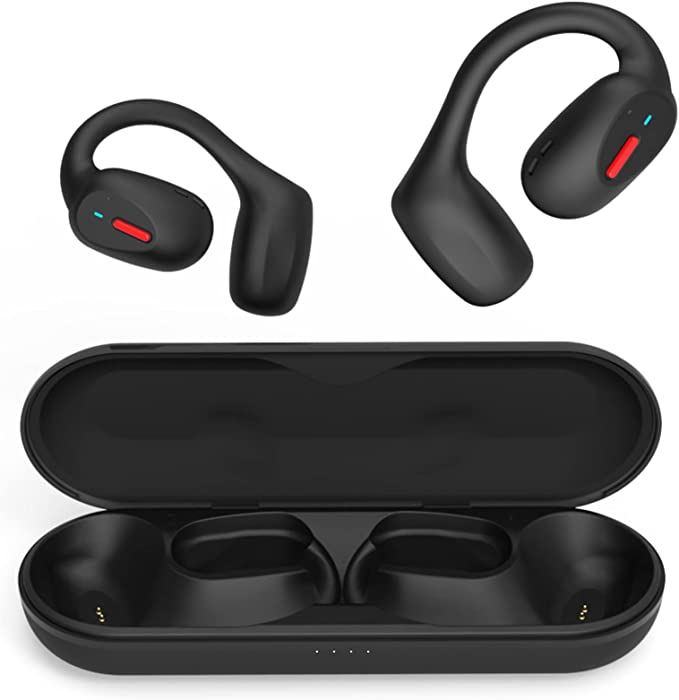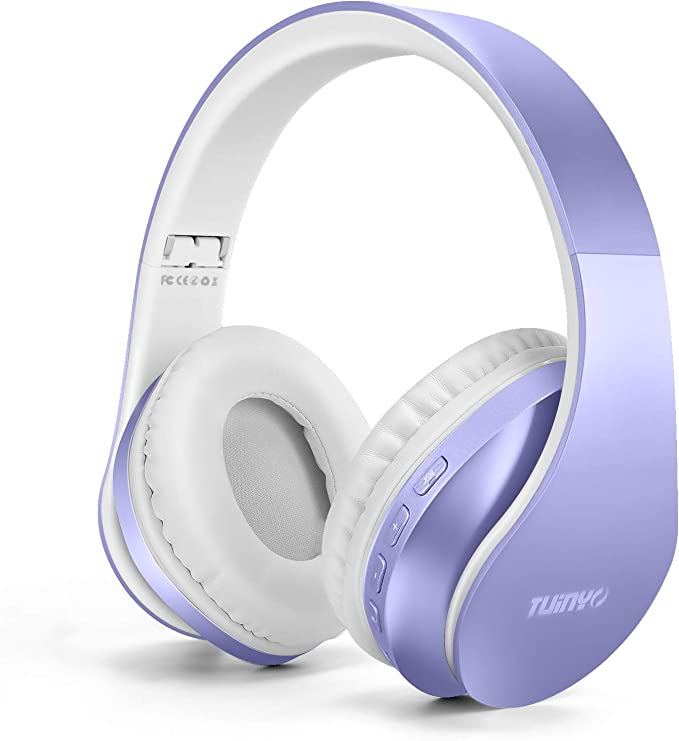The $12 Anomaly: Decoding the RUNOLIM RUWH204A and its 65-Hour Battery
Update on Nov. 14, 2025, 11:47 a.m.
In the audio market, we are conditioned to believe that “progress” means “smaller” and “smarter.” But this has led to an industry dominated by $150+ TWS (True Wireless) earbuds that die in 5 hours, are easily lost, and, for many, are physically painful.
This is why the RUNOLIM RUWH204A is a market anomaly. It is a $12 (twelve dollar), over-ear headphone with a 4.5-star rating from over 14,000 users. It is not “smart.” It is not “small.” And that is precisely why it is so successful.
This isn’t a review. It’s a “first principles” analysis of the engineering advantages of a “pragmatic” design. The RUWH204A is a case study in how to solve the real problems of the modern user: battery anxiety and comfort.

The 65-Hour Anomaly: The Engineering Advantage of “Space”
The headline feature is 65 hours of playtime. This is not a typo. This is the direct, physical result of its “Over Ear” form factor.
The TWS Trilemma: A TWS earbud engineer has to cram a driver, a Bluetooth chip, an amplifier, and a battery into a 4-gram plastic shell. This is insanely expensive. The battery is the first and biggest compromise, resulting in a 4-8 hour runtime.
The “Pragmatic” Headphone Solution (The RUWH204A):
The RUNOLIM’s engineers rejected miniaturization.
1. Space = Big Battery: The 0.44-pound (200g) over-ear design provides a massive amount of internal volume.
2. Big Battery = ???mAh: This space allows them to use a large, simple, and (most importantly) cheap high-capacity battery (likely 500mAh or more, like its competitors).
3. No ANC = All the Power: This headphone lacks Active Noise Cancellation (ANC). An ANC chip is a massive battery drain. By removing this single, power-hungry feature, 100% of the battery is dedicated to its Bluetooth 5.3 chip and 40mm drivers.
This is the “secret” to its 4.5-star battery rating. It is a “dumb” headphone, and its “dumbness” is its greatest engineering strength.

The “Anti-Earbud” Ergonomics: A 4.4-Star Comfort Rating
The RUWH204A’s 4.4-star comfort rating comes from another group of users betrayed by the TWS trend: people who find earbuds physically painful.
- The Problem: As one 5-star reviewer (“Jeffrey Bowie”) states, “I don’t like earbuds for that particular reason… I often fall asleep in them and they don’t hurt my ears.”
- The Solution: The Over-Ear (circumaural) design, combined with “softest memory-protein foam” earpads, creates a low-pressure seal around the ear, not in it. This distributes the (already lightweight) 200g load across the side of the head, not on the sensitive ear canal.
For users who prioritize all-day listening (for work, travel, or sleep) over a “discreet” look, this “old-school” form factor is a massive ergonomic win.

The “Anti-Anxiety” Failsafe: Wired + Wireless Mode
This is the product’s second “killer” feature, and it’s one that “premium” TWS buds can never offer: a 3.5mm audio cable.
This dual-mode (Wired + Wireless) capability is the ultimate “anti-anxiety” failsafe. * The Problem: Your 65-hour battery finally dies. Or you’re on a plane. Or your laptop’s Bluetooth is terrible. * The Solution: You plug in the included 3.5mm cable.
As “Jeffrey Bowie” confirms, this was a primary reason for his purchase:
“I got these because I don’t like to have to solely rely on Bluetooth. When I’m laying in bed… I like to be able to plug them into my tablet…”
This simple cable provides zero-latency audio (perfect for videos/gaming), zero-battery use, and universal compatibility with any device that has a headphone jack.

The Honest $12 Trade-Offs
A $12 headphone is not perfect. The 14,000+ reviews are clear on its limitations.
1. It’s NOT for Sports: It is lightweight, but it is not secure. As one 4-star user (“Val4007”) warns, it “tends to slip off my head when I work-out and run.” It is a stationary headphone for travel, work, or home.
2. It Leaks Sound: The lightweight, low-pressure fit means the passive seal is not perfect. As another user (“Braielle”) notes, “don’t turn them up too high if you don’t want others to listen with you.”
3. It’s NOT Noise-Cancelling: It has passive “Noise Isolating,” not active “Noise Cancelling.” It will muffle the world, but it will not silence it.
Coda: The Triumph of Pragmatism
The RUNOLIM RUWH204A is a 4.5-star “Best Seller” because it is a work of engineering genius for its price. It is a tool for the pragmatic majority who are tired of the compromises of “sleek” tech.
It is a 4.5-star product because its engineers made three brilliant, “user-first” decisions:
1. They sacrificed ANC to achieve a 65-hour battery life.
2. They sacrificed “in-ear” fashion for actual over-ear comfort.
3. They sacrificed “wireless-only” for a more reliable wired/wireless hybrid.
It is, as “Jeffrey Bowie” concluded, the perfect “anti-name brand” choice. It is the ultimate “worry-free” headphone for people who value comfort and battery life above all else.


































